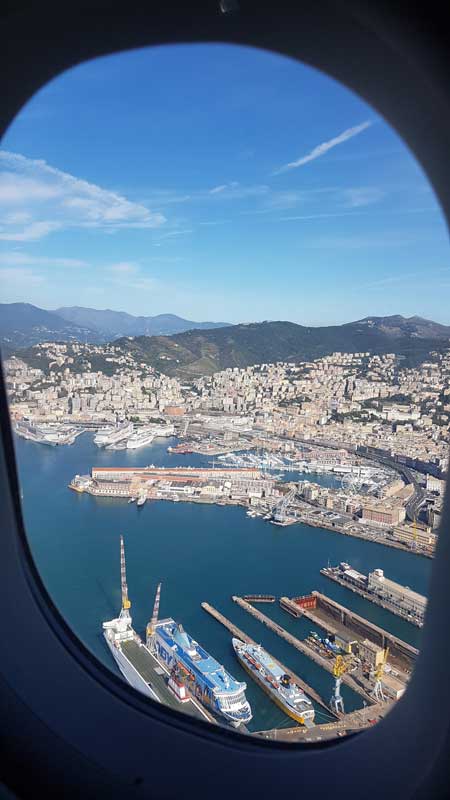Genoa (Genova in Italian) is a large port city in the north-west of Italy. It’s the regional capital of Liguria, and lies in the centre of this long coastal region at the top of Italy’s ‘boot’. The town’s maritime importance goes back centuries; it was a powerful republic, and is still a major commercial port with some of the after-dark seediness associated with big ports. Genoa is also a rejuvenated cultural centre – European Capital of Culture in 2004 – building on its rich history as well as looking to the future with contemporary architecture and a redeveloped harbour area. Weekend visitors can admire modern, Renaissance and Baroque architecture, fancy palaces and a host of museums and galleries. There are hip art cafes, boat trips and a large aquarium: a wide range of activities for a holiday or short trip.
Genoa is a great destination for a weekend break, with lots to do and easily accessible through budget flights to Genoa Airport, which is only a 20-minute bus ride from the city centre. It is also a good starting-point or stopover on a tour of the Italian Riviera. If you’re holidaying in one of the area’s lovely seaside resorts, Genoa is worth considering as a cultural addition to your itinerary, perhaps en route to or from the airport. It is linked by railway to most of the region’s coastal destinations, including the villages of the Cinque Terre.
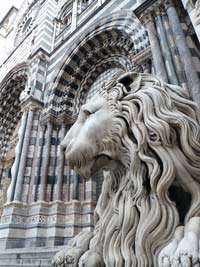
Genoa is in a dramatic location, which goes a long way towards explaining its dominance of this part of the Mediterranean. Its curving waterfront is situated in the shelter of steep protective hills. Everywhere in Genoa you’ll encounter the name of the Doria family; they ruled the city, commanded its fleets and commissioned many of its palazzi. Another famous local name is that of Christopher Columbus (Cristoforo Colombo), the explorer, whose supposed ‘birthplace’ can be seen in the historic town centre.
Find and book hotels in Genoa. With location maps and guest reviews.
Practical tourist advice
Genoa is quite well organised for tourists, with helpful tourist information kiosks by the waterfront and the Ducal Palace and a useful desk at the airport where you can pick up free maps, leaflets, English-language itineraries and advice on how to reach your hotel. If you want an English guidebook dedicated to Genoa, your best – and only – bet is Thomas Cook’s Genoa (CitySpots). The book is handily small and light; it’s a fairly superficial guide but helpful for getting an overview and for carrying around the city.
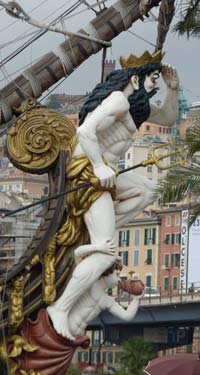
When planning your visit, be aware that Genoa is not a cheap place to ‘do’ museums. There are a number of different combined tickets available which could save money if you’re visiting several Genoa sights, but they offer overlapping benefits so you may need to do a bit of research to work out what will save you the most money. At the time of writing, the bus ticket from the airport includes 24 hours travel on the public transport system. Public transport is also included in the Card Musei + bus, a combined ticket for the majority of the town’s museums, which is available for 24 or 48 hours (and also comes in a cheaper version without included transport). The good modern museums by the old harbour, including the aquarium, are very commercial enterprises and have their own combined tickets. Prices can be eye-watering if you want to take a family to several of these attractions, while no chance is lost to direct you through a souvenir shop, cafe, or shopping mall. Look up the prices and decide your priorities in advance so you don’t end up with disappointed or resentful family members at the museum entrance.
As is typical in Italy, most museums are closed on Mondays. Unluckily for weekenders, Sunday, too, is a ‘dead’ day in central Genoa, with many shops, restaurants and cafes closed. On Sundays some museums have slightly shorter opening hours, and it’s worth noting that you may find the Strada Nuova museums busy with local residents, who have free admission on this day. To make the most of a weekend break, I’d recommend visiting Thursday – Sunday; either departing on Sunday or taking a trip out of town.
Genoa’s most important tourist sights
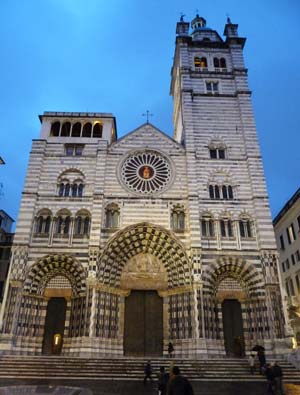
Genoa’s striking cityscape, with pastel buildings piled up steep hillsides above the long curving waterfront, is a sight in itself, and can be admired from a variety of viewpoints, including the roof of Palazzo Rosso and a popular terrace at Castelletto, high above the city centre and reached by a lift dating from 1909 which ascends from Piazza Portello. Taking a boat tour of the harbour will also give you a good idea of the town’s geography and history.
The Cattedrale di San Lorenzo is Genoa’s cathedral, set in a surprisingly small, sloping square. It’s a building in a patchwork of styles from Gothic to Renaissance, reflecting renovations over the centuries. The exterior is striped and decorated with coloured marbles, and inside the main portal is a fourteenth-century Byzantine-style fresco. The ashes of St. John were worshipped in a lovely Renaissance side-chapel attended by statues (take coins for illumination). Visit the church’s underground treasury to see a bowl claimed to be the Holy Grail and a platter said to have been the one used to present John the Baptist’s head. Just up the street from the cathedral is Genoa’s former Ducal Palace, the huge Palazzo Ducale, which now hosts a range of changing exhibitions and events.
Genoa boasts one of Italy’s UNESCO World Heritage sites. This status was awarded for the early town-planning of the Strade Nuove ‘new streets’ district, where grand palaces were erected in the late sixteenth and early seventeenth centuries as part of a scheme where noble families, resident in the new palaces, would pay host to visiting dignitaries. Via Garibaldi, an elegant narrow street lined with grandeur, is the cultural centre of tourist Genoa. The town’s best art collections can be visited here, in three palaces grouped together as the Musei di Strada Nuova: Palazzo Bianco, Palazzo Rosso and Palazzo Tursi, Garibaldi, where highlights include works by Filippino Lippi, Veronese and Rubens as well as many local artists.
Down by the rejuvenated Porto Antico (Old Port) are a number of attractions for all the family, including the Acquario, an aquarium which, along with the UNESCO listing, is Genoa’s proudest attraction, and where visitors can admire sharks and dolphins up close. This is a great destination for children, but fascinating for adult visitors too. Nearby is the Bigo, a panoramic lift inspired by shipyard cranes, designed by local star architect Renzo Piano. As the lift revolves you can enjoy the views over Genoa’s port and hillsides.
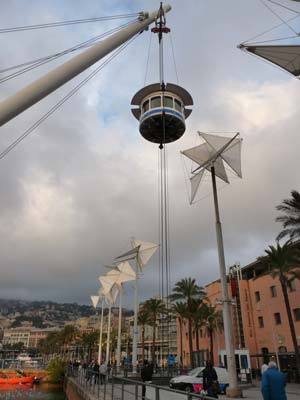
Genoa’s old town was partly rebuilt after bombing in the Second World War, but it was reconstructed as it had been: a medieval maze of narrow lanes and tall buildings. The principal lanes are lively in the daytime with cafes and busy small shops selling everything from antiques to cheap DVDs. The alleys are intriguing to explore, past shrines on the corners of buildings, tucked-away churches, palaces reaching up to the sky, take-aways selling local snacks like farinata and focaccia, and great shopping opportunities. But gritty authenticity is not far away, and some of the old town’s alleys are rather seedy, particularly at night, when I’d suggest you ask advice from your hotel receptionist on the red-light areas to avoid.
> More detailed Genoa tourist information – my descriptions and tips on what to see and do.
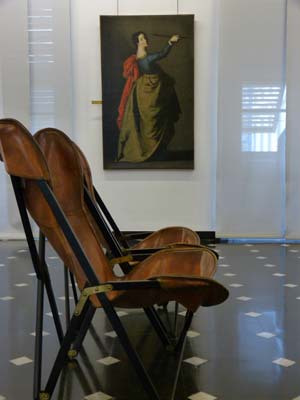
More time in and around Genoa
It would be easy to spend four or five days in Genoa without running out of things to do. The town has many more museums to visit, including galleries dedicated to modern art and a great museum of nautical history. There are attractive gardens to visit and various viewpoints and excursions. A funicular runs up to Righi where there are views over the city and the starting-point for a walk along the hilltop forts built to protect Genoa.
The fishing-village suburb of Boccadasse (reachable by bus from central Genoa) makes a nice afternoon excursion. If you are visiting in the summer months, you could go on a whale-watching boat trip, or catch a ferry to Portofino or Santa Margherita Ligure. Other resorts in easy reach of Genoa include Camogli and Rapallo. The Cinque Terre villages, a 90 – 120 minute train ride away, also make a possible day trip from Genoa, though it would be preferable to stay close by. Away from the sea, the narrow-gauge Genoa-Casella railway offers a pleasant excursion into the hilly rural interior.
Travel and public transport
Genoa has its own airport with BA and Ryanair flights from the UK, making the town an easy weekend destination. The airport is just a few miles from town, and there is an hourly bus connecting the airport with Piazza Acquaverde, right outside Stazione Piazza Principe, Genoa’s main train station. The bus service is called Volabus and the 4 ticket (which you can buy from the driver) is valid for 24 hours’ travel on Genoa’s public transport network. This special ticket can also be purchased from some news-stands in town (make the most of 24 hours travel before your return journey), and is sometimes sold with a good free brochure detailing some tourist itineraries using public transport.
> Genoa airport: read more
Genoa’s public transport is run by an organisation called AMT. Transport is included on the airline bus ticket and also on some of the combined museum tickets. Alternatively you can buy good-value tickets valid for varying amounts of time at news-stands, tabacchi and ticket machines.
Genoa has an exciting range of public transport modes, and riding on the town’s various forms of transportation can be fun in itself, particularly if you are travelling with children. As well as buses, trains and the underground Metro, you can also catch funiculars and lifts, including one novel lift which travels both horizontally and vertically through tunnels. The standard AMT ticket also includes the half-hour boat ride from the Porto Antico to Pegli, on the coast to the west of Genoa, where you can visit the gardens of Villa Durazzo Pallavicini, the region’s archaeological museum and a naval museum.
Genoa accommodation
Genoa has a good selection of friendly B&Bs in the historic part of town and further afield, as well as apartments for an independent stay. There are also several more traditional, decent budget options in town as well as big modern chain hotels.
> Where to stay: my selection of Genoa hotels
Eating, drinking and nightlife
Genoa is the home of pesto and in every local restaurant you’ll find this characteristic pasta sauce, usually served with trofie pasta. Farinata is the local snack of choice: this is a delicious hot dish made with chickpeas, which makes a good filling meal-on-the-go. Focaccia is also a speciality, and it comes in many varieties, from nutella-coated to the version filled with cheese from Recco.
For a good, cheap lunch, there are convenient cafes close to the principal museums where you can rest from sightseeing in stylish modern surroundings. Branches of the museum cafeteria m.café in the Ducal Palace, in Via Garibaldi and in Via Balbi offer a good range of filled rolls and a special brunch deal at the weekend. Also on Via Garibaldi is the Caffe dei Musei, where you can order a hot pasta dish for under 5 euros.
A nice glass of wine, or aperitivo, in Genoa can be surprisingly expensive. This is partly because of the modern tradition of enjoying generous free snacks or a buffet with your pre-dinner drink. Sometimes these are so generous that you could almost skip dinner. In the summer, a very stylish place to enjoy a drink is at the outside tables at Oltremodo, on the deck of the ship ‘Italia’, just past the Aquarium. Several of the hip museum cafes, including a panoramic cafe at Galata Museo del Mare, also offer aperitivi.
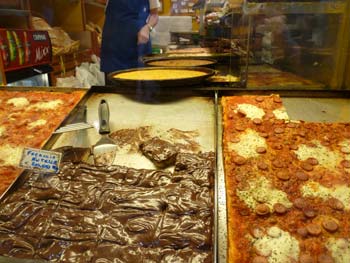 For something a bit less glamorous, and more late-night, Piazza delle Erbe is a popular little square whose small bars and outside tables are crowded with Genoa’s young and no-so-young. You can sit with glasses of wine and chat with friends, or hover in a bar doorway watching the world squeeze by.
For something a bit less glamorous, and more late-night, Piazza delle Erbe is a popular little square whose small bars and outside tables are crowded with Genoa’s young and no-so-young. You can sit with glasses of wine and chat with friends, or hover in a bar doorway watching the world squeeze by.
I visited two very good central restaurants for filling meals at around 30 euros per head. The Ristorante Colonne di San Bernardo is a smart and friendly restaurant in a historic palace, while the renowned Tre Merli has a cosy welcoming atmosphere; both serve delicious local dishes and wines. For a no-fuss pizza, visit the Pizzeria Vico dei Biscotti, a large and unpretentious pizzeria close to the lively bars of Piazza delle Erbe.
On this site
Genoa Airport – transport information
Useful links
Genoa hotels and B&Bs (Booking)
Genoa’s official UNESCO listing
Genoa Card Musei & offical tourist information
Acquario di Genova – Genoa Aquarium
